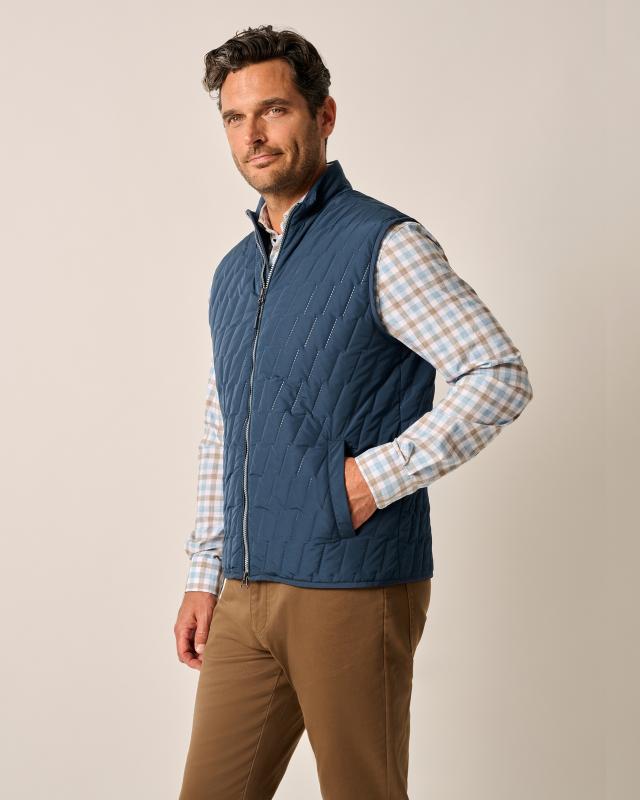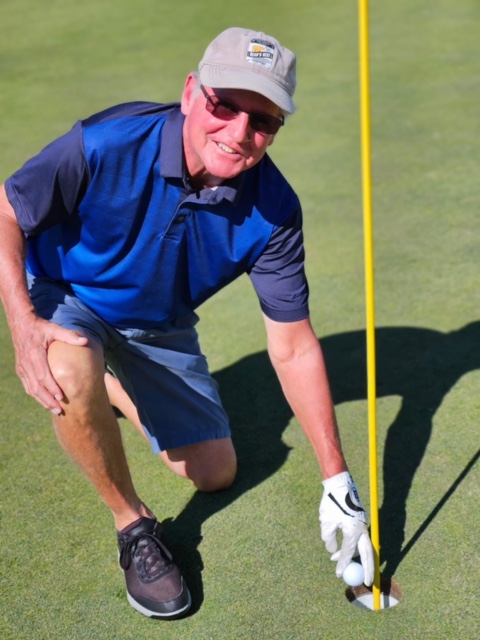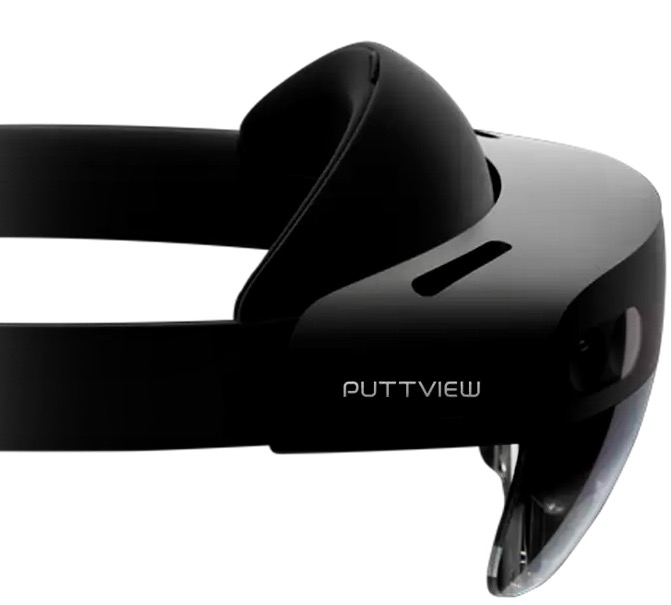Golf apparel companies often focus their efforts on high-end, middle or lower-price offerings.
Johnny-O is unapologetically high-end.
The California-based company blends East Coast prep with a California surf aesthetic, according to Courtney Hoppes, the director of PR and social partnerships. This combination is perhaps best expressed by the fact that among its few brick-and-mortar shops, one is in Newport, R.I., and another is in Newport Beach, Calif.
The line sells through men’s specialty stores, green-grass pro shops and its direct-to-consumer website.
The company name and fashion directives come directly from its founder, John O’Donnell, whose Hollywood star brother is Chris O’Donnell.
Company Senior Vice President Marcus Cecconi said the company’s growth has been exponential. “We want the largest share of your closet that we can,” he said.
All designs are done in-house, and he said they have baked in technical innovations such as stretch material. Among the fall 2024 options, I liked the Belfry quilted puffer vest ($148), the Griggs quarter-zip pullover ($198) and the Remmy lightweight performance hoodie ($138).
Two in one round
Congratulations to Chris Fares of Alexandria, La., for his two holes in one in the same round Oct. 27 at The Rookery.
Playing off his 3.1 handicap index, he made his first ace on the 168-yard second hole and the second ace on the 148-yard 15th hole, both with his nine-iron. Unfortunately, the rest of his round was nowhere close to what he hoped to play. Fares said, “Seeing as I’m likely one of a handful of people to ever have two holes in one in the same round, I’ll take what I can get.”
Maguire’s ace
Congratulations to Joe Maguire for his Oct. 21 hole in one at Jonathan’s Landing Golf Club near Magnolia. The Lewes resident used a nine-iron from 101 yards on the fourth hole.
PuttView X
Some golf training devices require a steep initial investment, if bought to help one or two golfers improve their skills. If that cost can be spread out, however, that initially daunting investment makes a lot more sense.
That was my reaction to the new PuttView X augmented reality putting system.
At a base cost of $14,480, I would balk. Nonetheless, I can see how golf clubs, universities and other organizations could leverage that cost.
At the 2024 PGA Show, I met co-founder Christoph Preziger, a German engineer. He described a years-long process of developing a virtual reality headset and optics that transfer an indoor training environment to the outdoors.
The system creates an effective 3D illusion by projecting one image in the left eye and a slightly different image in the right eye. The human brain blends the two images into a coherent 3D vision.
It is the digital version of the old stereoscope devices popular in the 20th century, such as the View-Master toy Boomers may fondly recall.
Preziger said the big challenge was to keep the image centered and stable as the player moved about. Headset weight was also an issue, but the current lightweight model addressed that problem.
The system reads green contours and uses that data to create 3D displays on outdoor greens or indoor putting facilities. PuttView also works with clients such as the University of Notre Dame, Baltusrol Golf Club and private owners to design and build indoor greens complexes, complete with mounding and other challenging elements.
As a player looks through the PuttView lenses toward a hole, the image display projects two lines. Ann-Kathrin Nahl, the marketing and communication manager and a former college golfer for the University of Mobile, called them the ideal line and the aiming line.
The ideal line shows how a putt would track from impact through to the hole if hit with the right speed and direction. The aiming line works two ways. First, it shows the golfer what line the putt should first take as it leaves the putter face. Second, the length of the aiming line matches the required speed for that given line.
For an uphill putt, the aiming line goes past the hole. For downhill putts, the same line stops short of the hole.
Nahl said the system learns the golfer’s tendencies or preferences, such as whether the player wants the ball to die at the hole or roll a foot past if it misses. She said it can also display the banana look. A range of directions and speeds are displayed simultaneously, creating a banana-like image. Putts that keep within the banana have a far better chance of working out nicely.
The device comes with a companion app (iOS or Android). Golf instructors can see what the student sees, record putts for analysis and alter the visual display as needed. A portable router connects the app to the device. Heat and sun deflectors attach to the headset when needed, and the entire package fits into a portable case. The initial fee also includes the first year’s subscription to the service.
Judging from the number of golf pros and coaches I saw testing the system at Demo Day, I think PuttView will be showing up at several new locations this year.





















































